DTH HAMMERS AND BITS
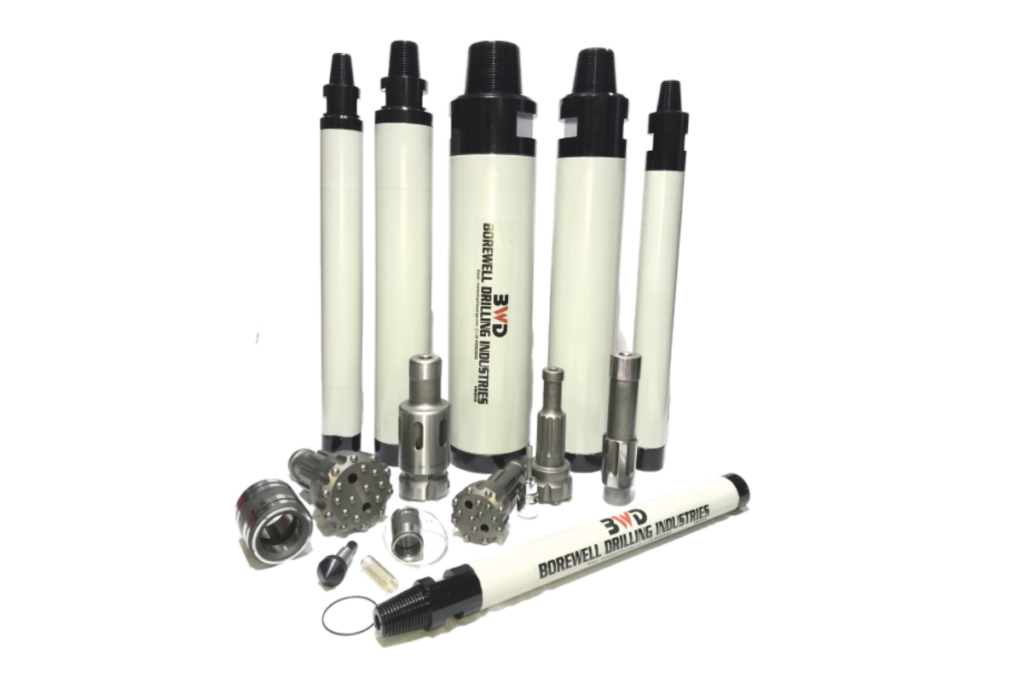
We manufactures good quality DTH Button bit shanks from the highest quality material which are suited to DTH hammers.
BWD Button Bits are available with different head configurations to suit different soil formations under different drilling conditions,
BWD button bits range varies from 4″ to 16″ in diameter.BWD manufactures different types of hammers with suitable bits for different applications, The DTH hammers range varies from 3″ to 10″ in Diameter.
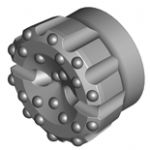
CONVEX
Suitable for most drilling applications, particularly hard, abrasive rock to give a combination of speed and good service life.
Ground Condition/Formation
Medium to Hard
Results
Bit Faces comes in more contact with rock formation. Better hold penetration rates.

Flat Face
Used for general purpose drilling, the flat face design is considered effective in very broken ground as well as hard formations that tend to overdrill.
Ground Condition/Formation
Very Hard
Results
Suitable for fractured rocks. More aggressive drilling style.

CONCAVE
The concave bit design is an excellent all around bit, suitable for soft and hard formations. The cone shaped face design provides good stability during drilling, allowing for straighter holes while reducing equipment vibration. The carbide configuration design gives added penetration in many formations.
Ground Condition/Formation
Medium to Hard
Results
Excellent air flushing, less drill hole deviation, better penetration rates.
Features & Benefits

01/ Benefit
BWD uses the premium quality steel and quality carbide with a latest manufacturing facility which yields superior quality products which are capable of performing in toughest drilling conditions.

02/Benefit
BWD DTH Hammers and Button Bits are designed to give high penetration depths.

03/Benefit
BWD Hammer components are heat treated under control to maximize life.

04/Benefit
Overall cost effective and user friendly tools are manufactured in the most demanding conditions.
DTH HAMMERS
We present our wide range of DTH Hammers, reckoned for its long service life and well-organized Performance level in unfavourable operating conditions. These precision designed hammers are enormously durable and have high tensile strength because of which they can easily drill deep hole. Owing to its unique design, our range requires less air for ensuring efficient performance in operation.

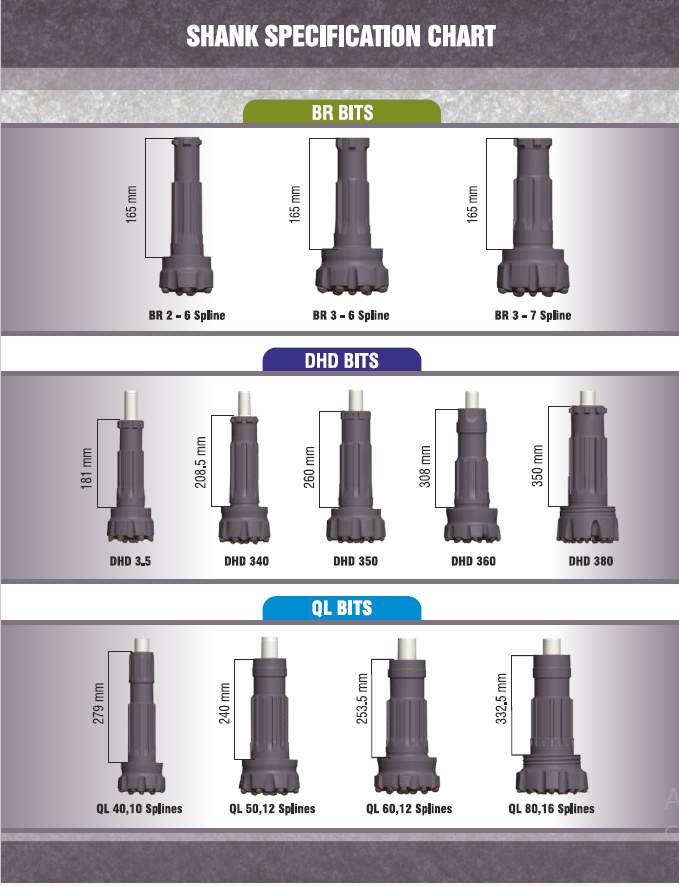
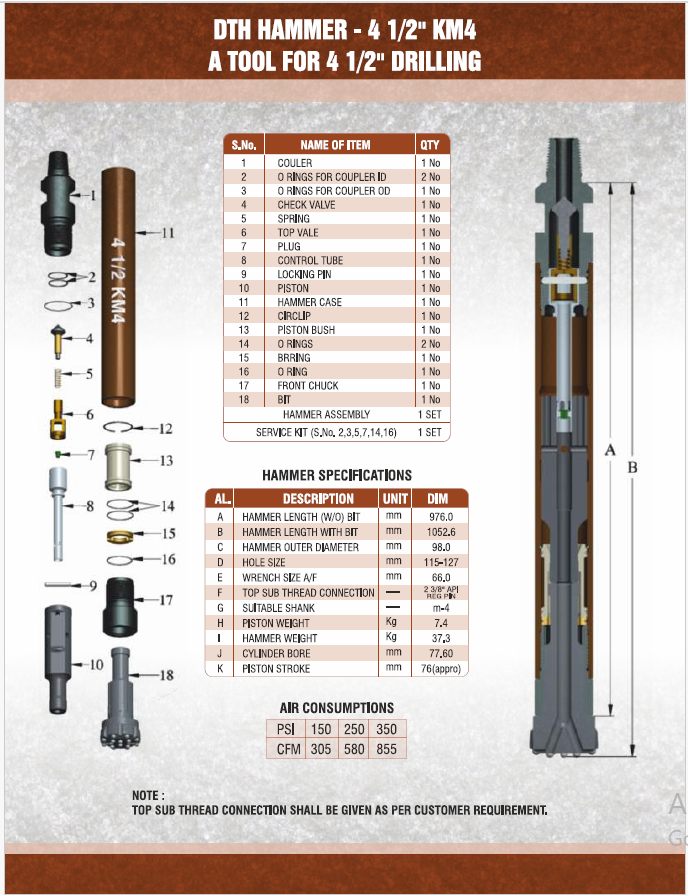
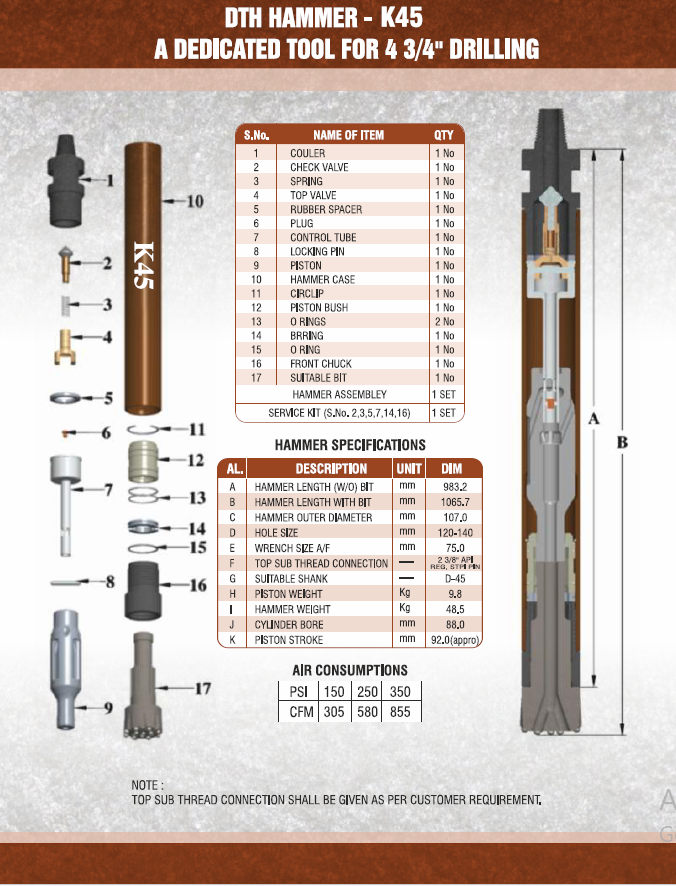
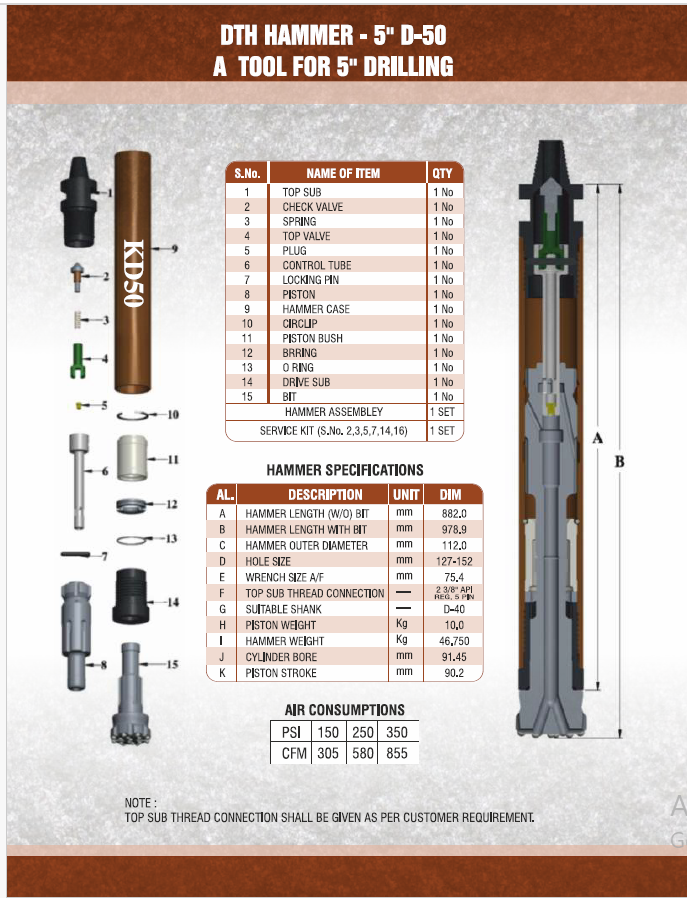
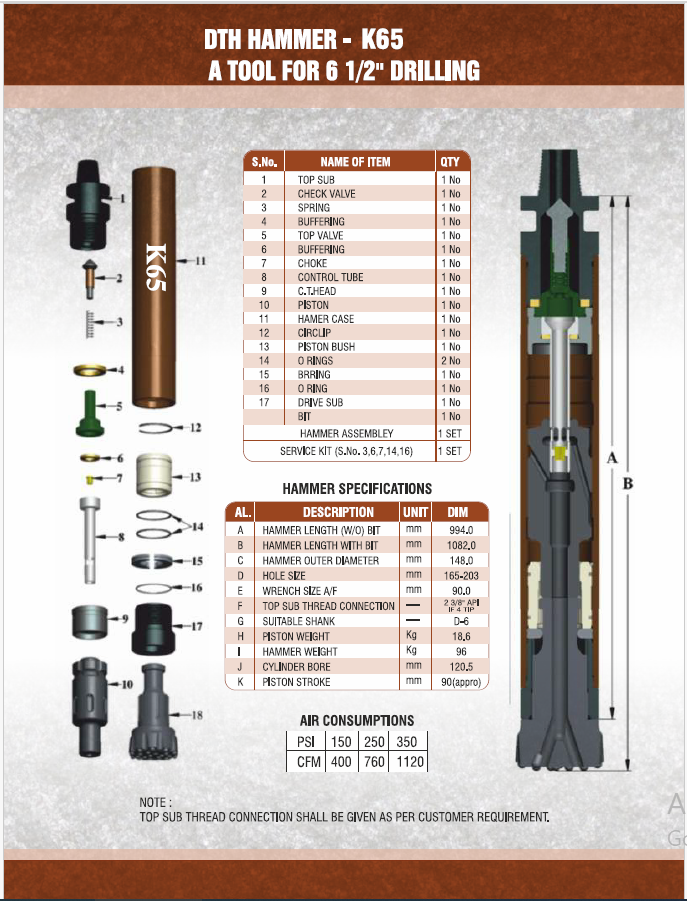
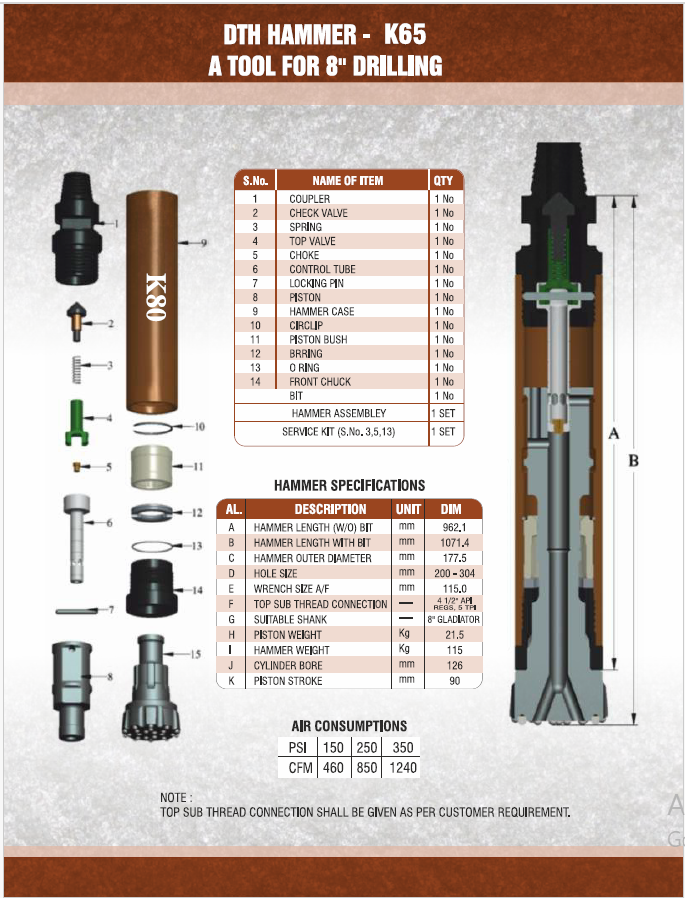
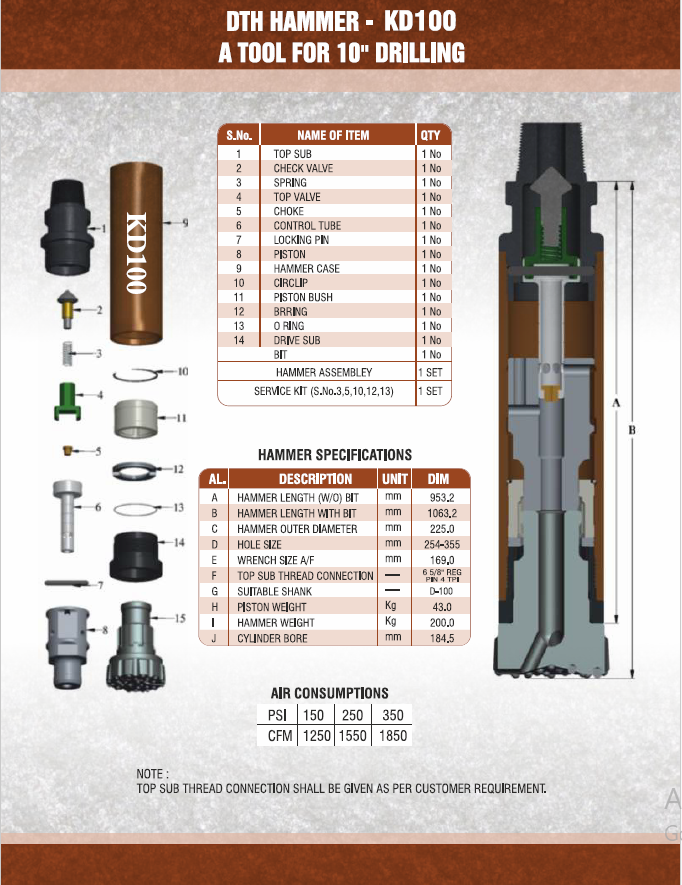
DTH HAMMERS MAINTAINENCE
GENERAL CARE
- Before drilling all drill rods should be free from rust scales and debris, check for scrap (sometimes found in new rods)
- Add Rock oil to hammer before coupling to drill rod and pour oil down the drill when you start the new shift
- Flush Hammer with Air/Water followed with sufficient oil at the end of each shift.
- Never leave the Hammer in wet muddy hole.
STORAGE
If you intend to store the hammer, we recommend that ½ pint (1¼ litre) of good quality rock drill oil be poured into the hammer to protect it. The oil should be poured through the backhead and by using a long screwdriver inserted into the backhead, the check valve can be depressed to allow the oil to run down into the piston chamber. Ensure that the thread protector and chuck cap are fitted to keep debris out and to prevent oil leakage, Store the hammer horizontally in a clean dry place.
COMISSIONING
Always use reputable drill bits in good condition. Using overrun bits will effect penetration rates, and reduce chuck life significantly due to excess cuttings wash. Coat the drill bit shank and the hammer threads with grease for protection and easier dismantling. Prior to use, lubricate the hammer with ½ pint (1¼ litre) of rock drill oil as described above. Fit the hammer to the drilling rig ensuring no debris or dirt enters the hammer from the site, dirty tubes or from unclean air lines, Make sure that the coupling threads from the drill are of the same specification to that of the hammer and they are in good condition. Run the hammer at half the air flow for a few minutes to allow the oil to flow through and for internal components to settle in.
LUBRICATION
It is vital for DTH hammers to receive a constant supply of proper rock drill oil to protect the internal components and to provide a good air seal between the piston and the inner cylinder, and the piston and the wear sleeve for efficient drilling. The correct consumption of oil is dependent upon the air volume and conditions. Please refer to the lubrication graph below for recommendations. When drilling in wet conditions the normal amount should be doubled. There should be visual evidence of oil around the drill bit shank and within the tube joints when changing tubes. The recommended grade of oil is dependent on the ambient temperature in which drilling is taking place as well as the operating pressure. As a rule of thumb, ISO320 grade rock drill oil should be used whenever possible as the hammer is a high frequency tool, however, where the pump cannot pump the oil in colder conditions, a lower grade of oil can be used as per the graph above.
INSPECTION
- Before starting the Inspection of used hammer parts, thoroughly clean the parts
- Al parts should be visually inspected for any signs of damage, wear or cracking.
- Check the body diameter of piston for any signs of pick up and burnings (cause poor lubrication) if so use the micrometre and measure the
- Diameters and refer to the minimum size quoted by manufacture.
- Examine the piston striking place if there are any signs of cracking replace the piston with new.
- The bore of wear sleeve should be periodically checked for any signs of pickup marks and galling. If these are present the wear sleeve should be honed to remove the pickups.

